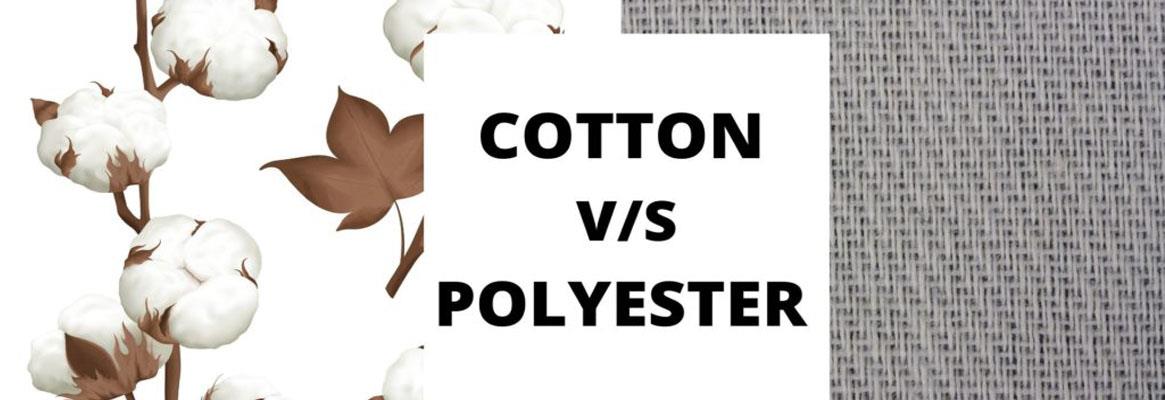The price race between two of the most famous fabrics has always been on the top of discussion in the textile and apparel market.
Cotton is ruling the textile industry since its inception. While polyester is only around half a century old fabric, still dominating the textile and apparel market.
Both the fabrics, cotton, and polyester are quite similar when it comes to comfort, durability, breathability, and performance. Though, they both are obtained from radically different sources. Cotton is a crop while polyester is obtained from petroleum.
Cotton is more comfortable or Polyester? Check here!
And probably, that’s why they differ in price!
Yes, Cotton and polyester prices have always been into a race to the bottom. One of the major factors driving this race is sales. As the price of fabrics drives the sales of fabrics.
In the 2000s, the cotton and polyester prices were extremely close to each other. After that, in the year 2011, jump in oil prices caused the polyester to jump simultaneously. And to date, the prices of both the fabrics are into intense competition.
Let’s discuss these fabrics one by one to check out the market value.
Cotton
Consumers love cotton!
Since the beginning of clothing, cotton is everyone’s favorite. Consumers love cotton because of its well-defined qualities:
Breathability
Hypoallergenic
Absorbent
Strength
Versatility
In the modern era, also cotton maintains its relevance and popularity, because of the two major qualities – Biodegradable and Sustainable.
Today, cotton is grown in 80 countries across the globe on 77 million acres of land. And the fabrics are used to manufacture everything from home fashion to industrial products. Click to Tweet
With time, the cotton market has seen many ups-downs regardless of any goodness. In 2008, the cotton consumption per capita jumped to 10.4 kilograms from 3.7 kilograms in 1950, according to a report by Food and Agriculture Organization of the United States and International Cotton Advisory Committee.
In the year 2009, the consumption of man-made fibers raised by 3.6 percent and the cotton consumption dropped down.
The cost-drives for cotton are:
Market demand
Agriculture commodities
Sustainability
Which is more sustainable – Cotton or Polyester?
During the mid of the year 2010 and the midst of the year 2012, cotton consumption declined largely. One of the major reasons was the cheap price of polyester. While in the year 2011, the cotton price was at a peak with an average price of 155.7 cents per pound.
After that, the price of cotton showed a declining trajectory.
In recent years 2017 and 2018, the price of cotton has fallen to 85.56 cents and 87.8 cents per pound respectively.
Polyester
The most commonly used polymer in the textile industry is polyester. The fabric is well known for the below-listed qualities:
Durability
Chemical Resistance
Wrinkle-free
Stretch ability
Abrasion resistance
Light-weight
Polyester holds more than half of the total market share in the Global Fibre Market. The fabric accounts for 55 percent followed by cotton accounting 27 percent of the total market share – and that’s amazingly great!
Polyester is all-set to beat cotton at a much affordable price. Other market drivers are:
Market demand
Supreme quality
Low maintenance
In the 1990s, the global consumption of polyester has grown at a sustained rate of nearly 7 percent annually. And in the 2000s, the growth rate of fabric was around 6 percent annually. In the year 2009, the polyester market raised with a high demand for man-made fibers. And the two major factors driving the growth of man-made fibre over natural were – low cost of production and versatility.
During the year 2010 and the first quarter of 2011, the consumption of cotton fell largely, and polyester ruled the textile market.
Then after, the polyester continues to rule the textile market.
In recent years, polyester is all-ready to take up the textile market with affordable prices compared to cotton.
Future Ahead
The textile world belongs to both the fabrics – cotton and polyester. Consumers love what their pockets love. Cotton is getting a bit expensive in consumer’s pocket and hence they are moving towards polyester fabrics.
But as soon as cotton prices drop down to compete with polyester, consumers will make a shift towards cotton.
The price race between these two rulers of the textile industry is so unpredictable.
Click here to learn more about cotton prices, trends, and market analysis!
All the numbers used in the blog are sourced from TexPro.

20240830145908.gif)
20240924091633.png)


20240924111837.jpg)




Comments